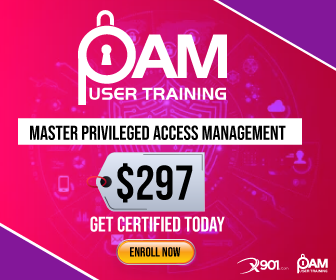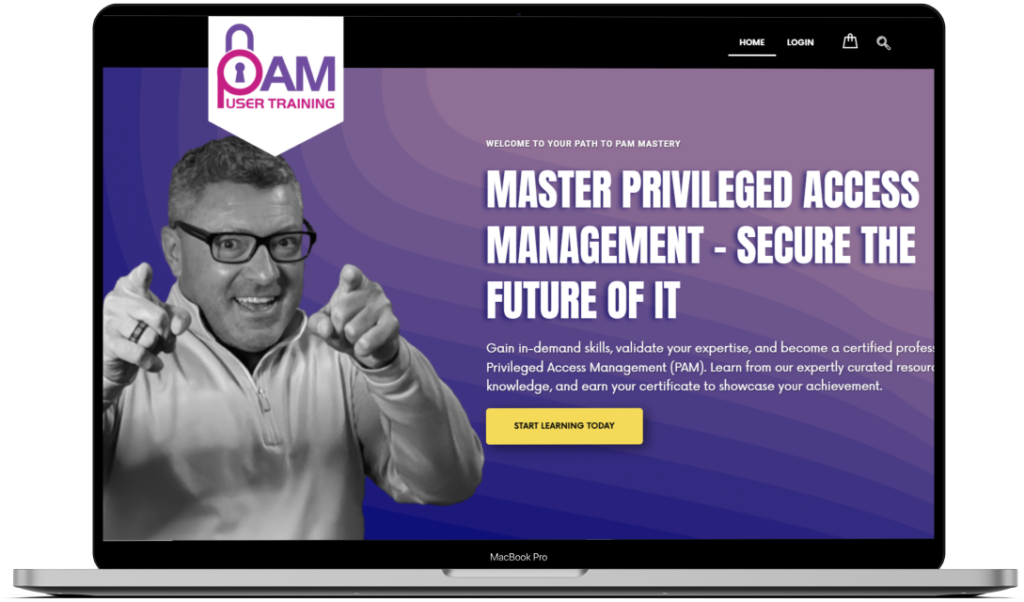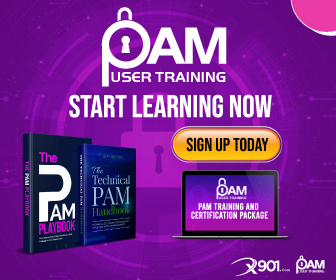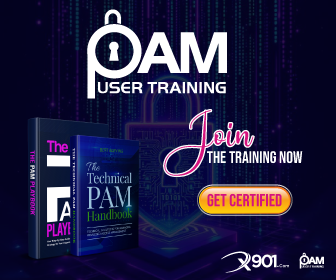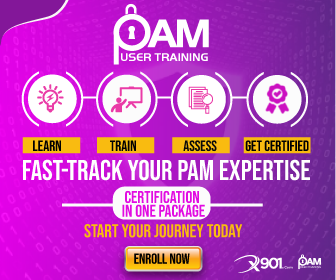Access Management Fundamentals
Access management is a core aspect of organizational security that ensures only authorized individuals can interact with specific resources. This chapter provides a comprehensive introduction to the concept, offering clarity on the mechanisms that empower businesses to manage access effectively. Designed for both newcomers and experienced professionals, this chapter will break down the foundational principles, significance, and practical applications of access management.
Access Management Fundamentals
Access management is a core aspect of organizational security that ensures only authorized individuals can interact with specific resources. This chapter provides a comprehensive introduction to the concept, offering clarity on the mechanisms that empower businesses to manage access effectively. Designed for both newcomers and experienced professionals, this chapter will break down the foundational principles, significance, and practical applications of access management.
YouTube
Just in Time Permissions Explained #Delinea #PAM #CyberSecurity
What is Access Management?
Access Management refers to the policies, procedures, and tools that control who can view or use resources within an organization. At its heart, it revolves around ensuring that the right people have the appropriate level of access to digital and physical resources when they need it. This fundamental practice supports seamless business operations while maintaining the security and integrity of sensitive information.
In simpler terms, access management is like a well-guarded building where each door is programmed to open only for those with the proper credentials. This method helps protect the organization from unauthorized access, minimizes the potential for data breaches, and upholds the confidentiality of essential data.
Importance of Access Management
Understanding the importance of access management is crucial for grasping why it plays a vital role in an organization’s security strategy. Here are some core reasons:
1. Mitigation of Risk:
By managing who has access to specific data, organizations can significantly reduce the potential for data leaks or breaches. Restricting access ensures that confidential information is not exposed to individuals who should not have it.
2. Prevention of Unauthorized Access:
Access management acts as a barrier to unauthorized users, preventing them from infiltrating systems and acquiring sensitive data. This includes both internal and external threats, as even trusted employees may inadvertently or maliciously attempt to access restricted areas.
3. Enhancement of Security Posture:
Effective access management strengthens the overall security infrastructure of an organization. It enforces accountability, ensures that only vetted individuals can interact with vital resources, and supports compliance with industry regulations.
Conclusion
Access management serves as the cornerstone of an organization’s security framework. By implementing comprehensive authentication, authorization, and audit processes, organizations can safeguard their assets, enhance trust, and maintain a secure environment for data and resources. This chapter underscores the importance of adopting well-rounded access management practices to mitigate risks and foster a culture of security.
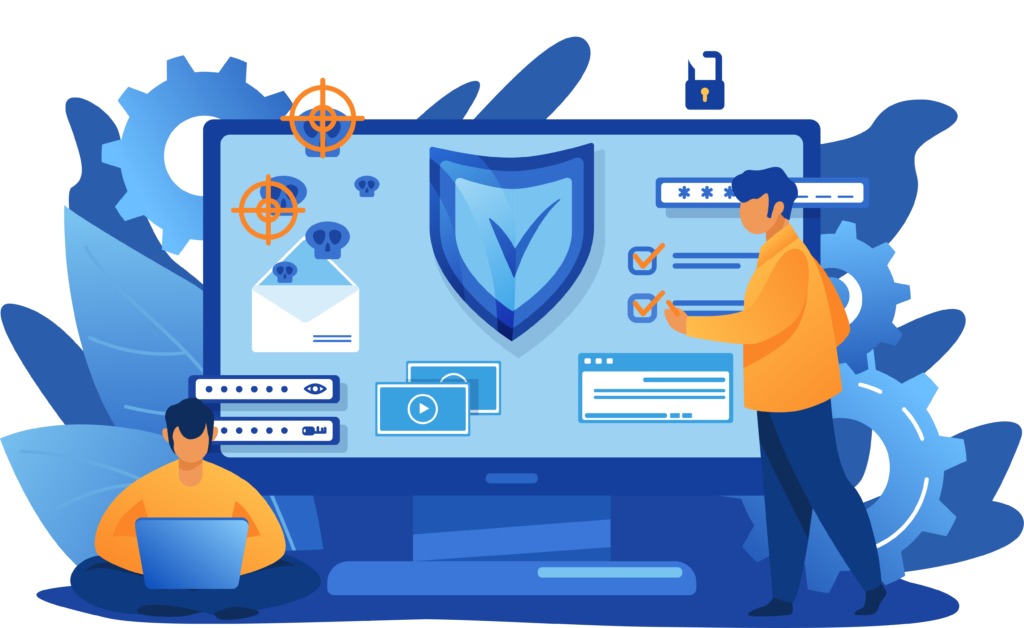
Privileged Access Management (PAM)
Privileged Access Management (PAM) is a critical aspect of cybersecurity that focuses on managing and safeguarding high-level accounts capable of accessing sensitive systems and data. By effectively implementing PAM, organizations can mitigate the risks associated with privileged accounts and maintain a fortified security posture. This chapter provides an in-depth exploration of PAM, discussing its importance, practical use cases, best practices, and leading solutions that enhance security.
Privileged Access Management refers to the policies, practices, and tools that secure and control the access rights of users with elevated privileges. These privileged users often include system administrators, IT personnel, and other roles with the authority to modify system configurations or access sensitive data. PAM aims to reduce the risks associated with these accounts, such as insider threats and external breaches.
Why is PAM essential?
- Mitigation of Insider Threats: Privileged users possess the ability to access, modify, or delete critical data. Without proper oversight, this can lead to accidental errors or malicious activities. PAM helps monitor and control these actions, reducing the likelihood of an insider threat.
- Prevention of Security Breaches: Privileged accounts are prime targets for cyber attackers due to their access capabilities. Implementing PAM ensures that unauthorized users cannot exploit these accounts, thereby preventing potential breaches and data leaks.
In essence, PAM not only safeguards an organization’s most critical assets but also supports compliance with data protection regulations and enhances overall operational security.
Understanding practical scenarios where PAM is invaluable helps highlight its importance across different sectors. Here are some real-world examples:
- Securing Access for System Administrators: System administrators often require extensive permissions to manage network configurations, databases, and servers. With PAM, organizations can limit the duration and scope of these privileges, ensuring that administrators have just enough access to perform their tasks without unnecessary risk.
Example: An organization can use PAM to implement temporary access rights for an administrator who needs to troubleshoot an issue, automatically revoking these rights once the task is complete.
- Managing Service Accounts: Service accounts are non-human accounts used for automated processes and application integration. Because these accounts often possess extensive permissions, they can become major security liabilities if left unmanaged. PAM solutions can store and regularly rotate service account passwords, limiting potential exposure.
Example: A financial institution uses PAM to oversee and rotate credentials for an automated banking system, minimizing the risk of unauthorized access by outsiders or malicious insiders.
- Protecting Confidential Client Data: Organizations handling sensitive customer data, such as healthcare providers or law firms, must ensure that only authorized personnel have access to this information. PAM solutions provide detailed auditing and reporting capabilities, tracking who accessed client data and when.Example: A hospital uses PAM to ensure only authorized doctors and medical staff can access patient records, with each session being monitored and logged to maintain compliance with health data regulations.
Implementing PAM effectively requires adherence to best practices that reinforce security and reduce vulnerabilities. Here are key recommendations:
1. Enforce the Principle of Least Privilege (PoLP): Limit user permissions to the minimum necessary for their roles. This reduces the risk of misuse or accidental damage by ensuring that users cannot access resources beyond their scope of work.
- Practice Tip: Review and update access rights regularly to adapt to role changes and reduce privilege creep.
2. Implement Role-Based Access Controls (RBAC): Assign access based on predefined roles rather than individuals. This helps streamline permission management and ensures consistent application of security policies.
- Practice Tip: Use RBAC to align user privileges with job functions, making it easier to manage access as team structures evolve.
3. Monitor Privileged Sessions for Anomalous Behavior: Monitoring and recording privileged sessions enable organizations to detect suspicious activities in real-time. This visibility helps identify potential threats before they escalate.
- Practice Tip: Use automated tools to alert IT teams of unusual login times, attempts to access unauthorized data, or other anomalous behaviors.
The market offers a variety of PAM solutions designed to bolster security. Highlighted below are some of the most popular solutions and their unique features:
1. CyberArk: CyberArk is a leader in PAM solutions, offering robust tools for securing privileged credentials. It provides automated password rotation, session recording, and fine-grained access controls to protect critical systems.
Key Features:
- Centralized password vault for storing and managing credentials.
- Advanced risk-based authentication.
- Detailed reporting for compliance audits.
2. BeyondTrust: BeyondTrust offers comprehensive PAM capabilities, focusing on reducing attack surfaces by managing and monitoring privileged access across networks.
Key Features:
- Endpoint protection integrated with privilege management.
- Real-time session monitoring and recording.
- Automated discovery of unmanaged privileged accounts.
3.Thycotic (Delinea): Thycotic provides user-friendly PAM solutions that integrate easily with existing IT infrastructure. It is known for its scalable approach and quick deployment.
Key Features:
- Secret Server for secure storage of credentials.
- Automated password rotation and policy enforcement.
- Threat analytics to detect and respond to risky behaviors.
YouTube
OATH OTP MFA Explained: Easy Setup Guide for Stronger Security
Zero Trust Security Model
The Zero Trust Security Model represents a significant shift in the way organizations approach cybersecurity. Unlike traditional security architectures that rely on perimeter defenses, Zero Trust operates under the principle of “Never trust, always verify.” This model assumes that threats can come from both outside and inside the network, requiring continuous verification of every user and device attempting to access organizational resources. This chapter provides a comprehensive overview of the Zero Trust model, its application in access management, best practices, and the challenges involved in its implementation.
Introduction to Zero Trust
The Zero Trust model marks a departure from the conventional security approach of assuming that users inside the network are trustworthy. Traditional perimeter-based security focuses on safeguarding the network’s edges, creating a boundary between trusted internal users and external threats. However, as remote work, cloud services, and mobile device usage increase, the boundaries of organizational networks become more complex and difficult to defend.
Key Principles of Zero Trust:
- Never Trust, Always Verify: All access requests are treated as if they originate from an untrusted source. Verification is required each time, regardless of the user’s location or device.
- Assume Breach: Organizations operate as if an attacker is already inside the network, fostering a proactive defense strategy.
- Continuous Monitoring and Validation: Security is not a one-time check. The Zero Trust model requires continuous monitoring and real-time assessment of users, devices, and activity.

How Zero Trust Differs from Traditional Security: Traditional perimeter-based security models assume that users inside the network are trustworthy, allowing broad access once a user is authenticated. Zero Trust, on the other hand, restricts access at every level and continuously verifies identity and trustworthiness, ensuring that users and devices can be trusted at all times.
Multi-Factor Authentication (MFA)
Multi-Factor Authentication (MFA) has become a cornerstone of access management, providing an essential layer of security by requiring users to verify their identity through multiple means. This chapter explores the basics of MFA, the types of authentication methods available, strategies for implementation, and how to tackle common challenges associated with its use.
Multi-Factor Authentication is a security mechanism that requires users to provide more than one form of verification to access an account or system. Unlike single-factor authentication, which relies solely on a password, MFA strengthens security by incorporating additional verification factors. The guiding principle of MFA is that even if one layer of protection is compromised (e.g., a password is stolen), the additional factors reduce the likelihood of unauthorized access.
Why is MFA Important?
- Enhanced Security: MFA significantly reduces the risk of unauthorized access by adding layers of defense, making it more difficult for attackers to breach systems.
- Protection against Credential Theft: Passwords alone can be compromised through phishing, brute-force attacks, or data breaches. MFA minimizes the impact of compromised passwords by requiring supplementary verification.
- Compliance and Trust: Many regulatory frameworks and data protection laws mandate or recommend the use of MFA as a standard practice to secure sensitive information.
MFA can be implemented using various verification methods, each with its own strengths and use cases. Here are the most common types:
1. SMS-Based Codes: A one-time password (OTP) is sent to the user’s registered phone number via SMS. The user must enter this code alongside their password to gain access.
Pros:
- Simple to implement and use.
- Familiar for most users.
Cons:
- Vulnerable to SIM-swapping attacks and interception.
- Dependence on cellular service.
2. Email-Based One-Time Passwords (OTPs): A temporary password is sent to the user’s registered email address. The user must retrieve and enter the OTP to complete authentication.
Pros:
- Easy to deploy and integrate with existing email services.
- Useful for users without mobile access.
Cons:
- Delays if emails take time to arrive.
- Risks if the email account is compromised.
3. Authenticator Apps: Applications like Google Authenticator, Microsoft Authenticator, and Authy generate time-based, one-time codes. The user must input this code, which refreshes every 30-60 seconds, during login.
Pros:
- Highly secure and less prone to interception.
- Works without cellular or internet connectivity after initial setup.
Cons:
- Requires users to install and manage an app.
- Can be difficult for non-technical users to set up initially.
4. Biometric Verification: Uses unique biological traits such as fingerprints, facial recognition, or iris scans to verify identity.
Pros:
- Provides high security as biometrics are difficult to replicate.
- Fast and convenient for users.
Cons:
- Device compatibility limitations.
- Concerns about privacy and data storage for biometric information.
5. Hardware Tokens: Physical devices, such as USB security keys or smart cards, that users insert or tap to authenticate.
Pros:
- Very secure and immune to remote interception.
- Suitable for high-security environments.
Cons:
- Users need to carry the token, which can be lost or stolen.
- Initial deployment and cost can be high.
When implementing MFA, organizations need to align their strategies with their security needs, user base, and potential threats. Here’s a guide to help in choosing and deploying the right MFA solution:
- Assess Organizational Needs: Identify the sensitivity of the data and systems that require protection. High-risk environments, such as financial institutions, may benefit from hardware tokens or biometric verification, while lower-risk environments might opt for SMS-based codes or authenticator apps.
- Consider User Preferences: User adoption is critical for the success of MFA. Choose methods that align with the technical comfort level of your user base. For example, an organization with a tech-savvy workforce might implement authenticator apps, while less tech-oriented users might prefer SMS-based codes.
- Evaluate the Threat Landscape: Understand the types of cyber threats your organization faces. For example, industries vulnerable to SIM-swapping or phishing attacks should avoid SMS-based MFA and opt for more secure methods like authenticator apps or hardware tokens.
- Integrate with Existing Systems: Ensure the MFA solution integrates seamlessly with your current authentication infrastructure, such as single sign-on (SSO) systems, to maintain a smooth user experience.
- Pilot Program: Test the chosen MFA method with a small group before full-scale deployment. Gather feedback and make necessary adjustments to improve user experience and compliance.
Implementing MFA can come with challenges that organizations need to anticipate and address to ensure a smooth rollout.
1. Overcoming User Resistance: Users may resist MFA due to perceived inconvenience or complexity. This can hinder adoption and reduce the effectiveness of the security measure.
Solution:
- Educate users on the importance of MFA and how it protects their data.
- Provide easy-to-follow tutorials and support for initial setup.
- Gradually roll out MFA to give users time to adjust.
2. Device Compatibility Issues: Not all users may have devices capable of supporting certain MFA methods, such as biometrics or hardware tokens.
Solution:
- Offer multiple MFA options to accommodate various devices and preferences.
- Ensure basic MFA methods, such as SMS or email OTPs, are available as alternatives.
3.Balancing Security and Usability: A highly secure MFA method can sometimes be cumbersome, leading to poor user experience or decreased productivity.
Solution:
- Implement adaptive MFA, which adjusts the level of verification based on risk factors. For example, less stringent verification for recognized devices and stronger verification for unknown or high-risk access attempts.
- Use SSO integration to streamline the user experience without compromising security.
4. Administrative and Cost Considerations: Deploying MFA, especially methods involving hardware tokens or biometrics, can be costly and require significant administrative oversight.
Solution:
- Start with cost-effective MFA solutions, such as authenticator apps, and scale up as needed.
- Automate administrative tasks where possible and train IT teams to manage MFA effectively.
Conclusion
Multi-Factor Authentication is a powerful tool for reinforcing access security by requiring multiple forms of verification. From traditional methods like SMS-based codes and email OTPs to more secure options like biometric authentication and hardware tokens, MFA caters to a wide range of organizational needs. Implementing MFA requires careful consideration of security objectives, user preferences, and technical capabilities. Overcoming challenges such as user resistance and balancing usability with security is key to successful adoption. By following best practices and employing adaptive strategies, organizations can enhance their cybersecurity posture and protect against a growing landscape of digital threats.
About Me

Bert Blevins is a distinguished technology entrepreneur and educator who brings together extensive technical expertise with strategic business acumen and dedicated community leadership. He holds an MBA from the University of Nevada Las Vegas and a Bachelor’s degree in Advertising from Western Kentucky University, credentials that reflect his unique ability to bridge the gap between technical innovation and business strategy.
As a Certified Cyber Insurance Specialist, Mr. Blevins has established himself as an authority in information architecture, with particular emphasis on collaboration, security, and private blockchain technologies. His comprehensive understanding of cybersecurity frameworks and risk management strategies has made him a valuable advisor to organizations navigating the complex landscape of digital transformation. His academic contributions include serving as an Adjunct Professor at both Western Kentucky University and the University of Phoenix, where he demonstrates his commitment to educational excellence and knowledge sharing. Through his teaching, he has helped shape the next generation of technology professionals, emphasizing practical applications alongside theoretical foundations.
In his leadership capacity, Mr. Blevins served as President of the Houston SharePoint User Group, where he facilitated knowledge exchange among technology professionals and fostered a community of practice in enterprise collaboration solutions. He further extended his community impact through director positions with Rotary International Las Vegas and the American Heart Association's Las Vegas Chapter, demonstrating his commitment to civic engagement and philanthropic leadership. His specialized knowledge in process optimization, data visualization, and information security has proven instrumental in helping organizations align their technological capabilities with business objectives, resulting in measurable improvements in operational efficiency and risk management.
Mr. Blevins is recognized for his innovative solutions to complex operational challenges, particularly in the realm of enterprise architecture and systems integration. His consulting practice focuses on workplace automation and digital transformation, guiding organizations in the implementation of cutting-edge technologies while maintaining robust security protocols. He has successfully led numerous large-scale digital transformation initiatives, helping organizations modernize their technology infrastructure while ensuring business continuity and regulatory compliance. His expertise extends to emerging technologies such as artificial intelligence and machine learning, where he helps organizations identify and implement practical applications that drive business value.
As a thought leader in the technology sector, Mr. Blevins regularly contributes to industry conferences and professional forums, sharing insights on topics ranging from cybersecurity best practices to the future of workplace automation. His approach combines strategic vision with practical implementation, helping organizations navigate the complexities of digital transformation while maintaining focus on their core business objectives. His work in information security has been particularly noteworthy, as he has helped numerous organizations develop and implement comprehensive security frameworks that address both technical and human factors.
Beyond his professional pursuits, Mr. Blevins is an accomplished endurance athlete who has participated in Ironman Triathlons and marathons, demonstrating the same dedication and disciplined approach that characterizes his professional work. He maintains an active interest in emerging technologies, including drone operations and virtual reality applications, reflecting his commitment to staying at the forefront of technological advancement. His personal interests in endurance sports and cutting-edge technology complement his professional expertise, illustrating his belief in continuous improvement and the pursuit of excellence in all endeavors.


